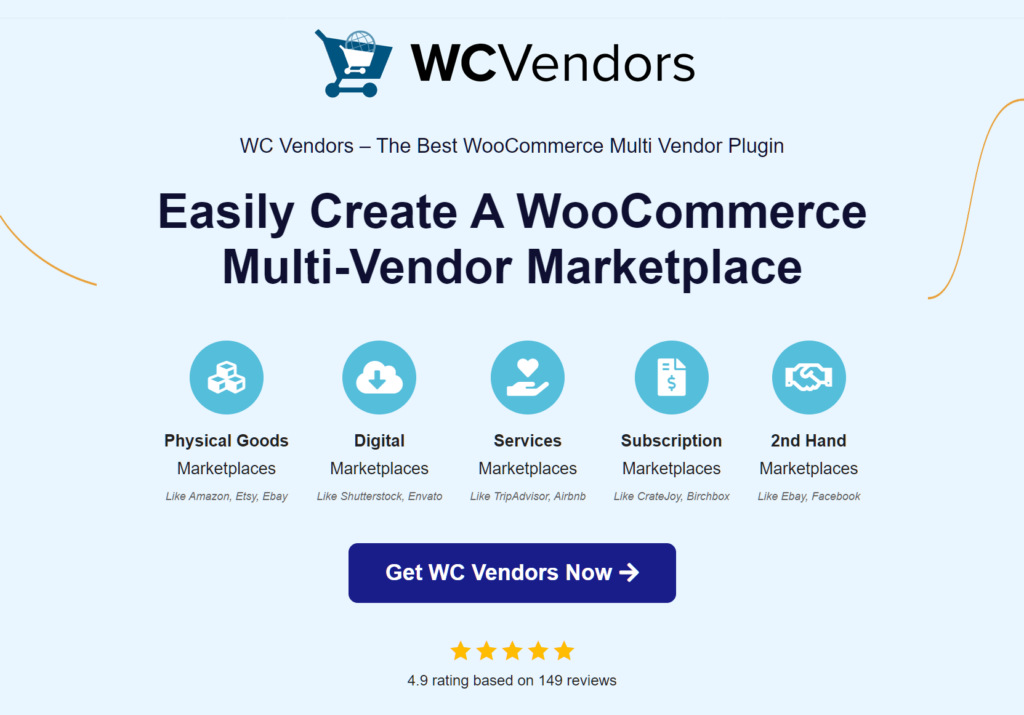
The internet may have made the world smaller, but it has also intensified competition in the realm of online selling. Thus, if you hope to turn your marketplace into an e-commerce behemoth, it’s a good idea to start thinking about using global brand strategies.
Mastering such strategies can introduce your multi-vendor platform to a worldwide audience, boosting traffic and profits to foster growth. So if you want to stand out in a crowded industry, it may be time to think bigger.
Today, we’ll explore various global brand strategies you can implement to take your business to the world stage. So let’s dive in!
How To Elevate Your Marketplace Worldwide Using Global Brand Strategies
You can leverage many strategies to attract potential customers from all over the planet. Here are eight of them:
1. Optimize product listings
Among the best ways to attract and convert customers in global markets is to optimize your product listings. After all, high-quality listings are more likely to pique consumer interest and encourage purchases.
Thus, make sure to refine your product titles and images. When it comes to descriptions, highlight key features and benefits that resonate with consumers. Plus, consider showcasing user-generated content, such as photos and reviews, to build trust and credibility.
Whenever possible, consider optimizing your listings for each market’s language and cultural context.
For a more detailed discussion on optimizing product listings, check out our article, “Vendor Products Handbook: Mastering Your Marketplace Product Listings (Full Guide).”
The right marketplace solution can also streamline the creation of exceptional product listings. For example, the versatile WooCommerce plugin WC Vendors makes it super easy to create all aspects of an online multi-vendor marketplace – including top-notch product listings.
2. Harness the power of social media
In the right hands, social media is a potent marketing tool. Not only does it engage customers on a personal level but it also boasts global reach.
If you promote something via a popular social media platform, people from other parts of the world will see it. Not to mention making social media posts is so cheap that anyone with internet access can take advantage of this marketing strategy.
Thus, use platforms such as Facebook, Twitter, Instagram, and the like to share product updates, special promotions, and user-generated content. Encourage user interaction and feedback to foster a sense of community around your brand. Furthermore, leverage social media advertising to reach new audiences and drive traffic to your marketplace website.
We also recommend creating dedicated social media profiles for each target market and tailoring your content to appeal to local tastes and preferences. For example, you can have different Facebook accounts for the Southeast Asian, European, Middle Eastern, and North American markets. You can then customize your messaging to better resonate with each location’s unique preferences and cultural nuances (more on this below).
If you’d like some tips on using social media as a marketing tool, read our article, “How To Harness Black Friday Social Media Campaigns For Success.” Take note that the strategies this article discusses can be implemented during any occasion, not just Black Friday.
3. Craft a brand identity that resonates across the globe
Global brand strategy is like creating a masterpiece that captivates audiences worldwide. It goes beyond merely translating words; it’s also about adapting your message to different cultures while preserving the brand’s essence.
Let’s say you’re operating a beverage marketplace you want to promote in Japan. Instead of simply translating your most popular coffee brand’s slogan, “Wake Up and Smell the Coffee,” you delicately adjust its message to align with Japanese culture.
Recognizing Japan’s tea-drinking tradition and reverence for nature, you rework your promotional material to emphasize enjoying a morning cup amidst tranquil surroundings. This nuanced adaptation makes Japanese customers feel like your brand understands them. As a result, you foster a sense of connection and authenticity – essential elements in building a global brand presence.
4. Tailor your message
One of the most important global brand strategies is customizing your message so it connects with the people you’re trying to reach in each market.
This strategy requires understanding what people like, what matters to them, and what problems they face. Thus, learn about their preferences by doing your research and listening to what customers have to say. Only then can you adjust your message to suit their needs.
For instance, let’s say you’re selling skincare products and you aim to expand your business to different countries. In Japan, where skincare is seen as an important part of self-care, you could emphasize your products’ gentle and nourishing qualities. However, in the United States, convenience is often valued. Therefore, you could instead highlight the quick-absorbing and time-saving features of the same products.
By tailoring your message to fit each market’s preferences, you can make a stronger connection with potential customers and increase your chances of success.
5. Implement localization
Localization refers to making your marketplace feel right at home for users in different parts of the world. However, it’s more than just translating words; it’s about making sure everything from your website to your products fits the preferences of each market you’re targeting.
This could mean changing how you describe your products, adjusting prices to match local currency values, offering payment methods that are popular in specific regions, and even rearranging how your website looks and feels to make it easier for users to navigate.
Let’s say you’re running an online clothing marketplace and you want to expand into the Middle East. You could adjust your product descriptions to align with the region’s cultural norms. In addition, you could offer prices in local currencies like the Saudi riyal or the UAE dirham to make it easier for customers to understand how much they’re spending. Furthermore, you could provide payment options that are commonly used in the Middle East.
So, what happens when you localize your marketplace in these ways? You can create a more welcoming and user-friendly experience for customers in the Middle East. As a consequence, you increase your chances of success in that market.
6. Embrace cultural diversity
It’s essential to embrace different cultures when you’re trying to succeed in global markets. Instead of trying to make everyone the same, celebrate what makes each culture unique and include those things in how you promote your brand. This could mean using different languages in your marketing materials, featuring diverse models in your advertisements, or even just acknowledging holidays and traditions from different countries.
What if, for example, you’re selling food products online and you want to appeal to customers from different parts of the world? Why not create recipes inspired by different cuisines? Or how about featuring cooking tutorials that show how to make traditional dishes from various cultures? Embracing cultural diversity in this way shows customers that you appreciate and respect their heritage, which can help them feel more connected to your brand.
Here’s another scenario. Imagine you’re expanding your fashion marketplace to include customers from India. For starters, you could feature models wearing traditional Indian clothing in your advertising campaigns. Moreover, you could incorporate Indian festivals like Diwali or Holi into your marketing promotions, offering special discounts or curated collections to celebrate these cultural events.
So, what happens when you embrace cultural diversity in your global brand strategies? Basically, you help create a more inclusive and welcoming environment for customers from different backgrounds. Consequently, you strengthen your brand’s connection with global audiences.
7. Build trust and credibility
Cultivating trust and credibility is vital when you’re growing your marketplace brand around the world.
One way to do this is by befriending people who already enjoy influence in the places you’re trying to reach. These could be well-known social media personalities, bloggers, or other businesses. By collaborating with them, you can show potential customers that they can rely on your brand.
Another thing you can do is to share what your customers have to say about your marketplace. For example, you could feature testimonials and reviews from your happy customers. Sharing these positive experiences shows buyers that they can trust your marketplace to deliver quality products.
Here’s another example. Imagine you’re expanding your online marketplace to France. First, you could team up with popular French lifestyle bloggers or collaborate with local artisans to showcase their products on your platform. Secondly, you could feature testimonials from your French customers, highlighting their satisfaction with your products’ quality and authenticity.
Such global brand strategies can establish trust and credibility in the French market, attracting more customers to your marketplace.
8. Maintain consistency
Consistency is crucial when it comes to your brand. This means making sure the major aspects of your brand stay the same, no matter where your customers are.
This could be things like using the same logo, colors, and style in all your marketing materials. In addition, it could mean making sure your customer service remains friendly and helpful.
When your brand is consistent, it helps people recognize and remember you. This can make them more likely to return and buy from you again.
For instance, if you want to sell your skincare products worldwide, you should keep your branding consistent across all markets. This means using the same logo and packaging design. Moreover, it entails keeping your messaging and tone of voice consistent in all your marketing materials. Furthermore, you should provide the same level of customer service to all your customers, no matter where they’re located.
When you keep your brand consistent, you develop trust and loyalty with your customers. This can help your business succeed in the long run.
Conclusion
Mastering global brand strategies allows you to effectively promote your brand across diverse markets. This way, you can elevate your marketplace’s visibility, credibility, and profitability on a global scale.
To summarize, you can expand your marketplace’s reach worldwide by implementing the following global brand strategies:
- Optimize product listings
- Harness the power of social media
- Craft a brand identity that resonates across the globe
- Tailor your message
- Implement localization
- Embrace cultural diversity
- Build trust and credibility
- Maintain consistency
Do you have any questions about global brand strategies? Let us know in the comments!






